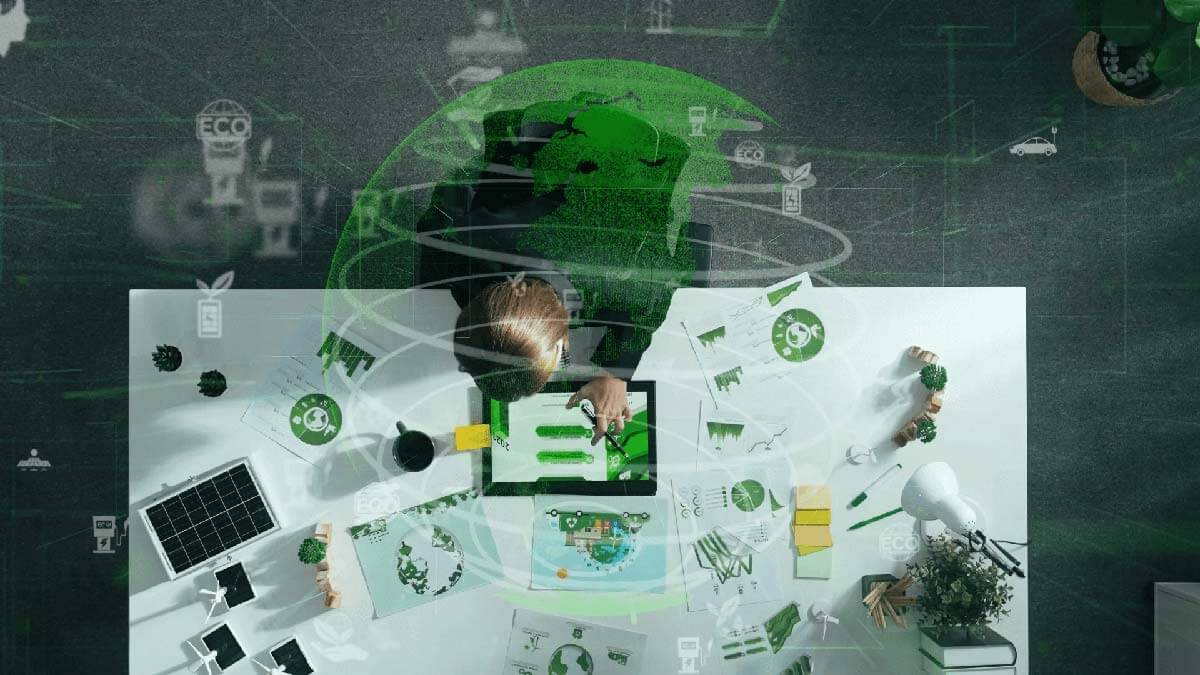8 min read
Circular economy: turning waste into value for manufacturers
Author
Platned
Published
26/09/2025

The global economy is only 7.2% circular. That means more than 90% of the materials we extract, use, and discard are lost to landfill or incineration. For manufacturers, this is not just an environmental concern – it’s a business risk. Rising material costs, supply chain disruptions, and tightening regulations are exposing the flaws of the traditional linear model of “take, make, dispose.”
The alternative is a circular economy – an approach that keeps materials, components, and products in use for as long as possible. For manufacturers, this means designing for reuse, enabling repair and refurbishment, and embracing remanufacturing at scale. Instead of seeing waste as a burden, circularity helps turn it into a resource.
From linear to circular: the shift manufacturers must make
In a linear system, once a product reaches the end of its life, its value is lost. In contrast, circular models capture that value again and again. By applying the 9R framework – Refuse, Rethink, Reduce, Reuse, Repair, Refurbish, Remanufacture, Repurpose, Recycle and Recover – manufacturers can reduce dependency on virgin resources and create new revenue streams.
This shift is not just about compliance or meeting sustainability targets. It’s about competitiveness. Research shows that 33% of executives expect circular start-ups to disrupt their industry, and half believe circularity will become the “new normal” within a decade. Those who move early will gain a clear advantage over those who lag behind.
Remanufacturing: climbing the value hill again
Remanufacturing is one of the most powerful tools in the circular economy. Unlike simple repairs, it is a fully industrialised process that brings used products back to a “good-as-new” condition, often with full warranties and performance guarantees.
Think of a product’s life cycle as a hill: raw materials, manufacture, distribution, and use. Traditionally, the downhill slope meant lost value once a product reached end of life. Remanufacturing lets manufacturers climb that hill again. An engine with 20 years of service can go another 20 after remanufacturing – saving raw materials, reducing emissions, and giving customers a reliable, lower-cost alternative.
It’s a triple win:
- Business – reduce raw material costs, which can make up 70% of production expenses.
- Customer – deliver high-quality, warrantied products at lower prices.
- Planet – cut emissions and energy use across the life cycle.
Remanufacturing is already proving its worth in industries such as aerospace, automotive, and heavy equipment. As customers become more comfortable with refurbished products and as regulations demand more responsible resource use, remanufacturing will only grow in importance.
Why circularity is accelerating
Several forces are pushing manufacturers to embrace circular models more urgently:
- Resource pressure – humanity currently consumes the equivalent of 1.75 Earths’ worth of resources each year. This level of demand is unsustainable and leaves businesses exposed to price volatility and shortages.
- Regulation – from the EU’s Circular Economy Action Plan to the US Inflation Reduction Act, governments are creating strong incentives for sustainable practices, including tax benefits and penalties for non-compliance.
- Customer demand – both businesses and consumers are showing growing interest in refurbished and remanufactured products. The global refurbished electronics market, for example, is projected to reach $140 billion by 2030.
- Technology readiness – platforms like IFS Cloud™, delivered by Platned, give manufacturers the tools to manage disassembly, inspection, core tracking, reverse logistics, and life cycle reporting in one system.
These forces are converging to make circularity not just an option, but an imperative. Manufacturers that fail to adapt risk higher costs, weaker resilience, and reputational damage.
The opportunity for manufacturers
The transition to circular business models takes planning, investment, and cultural change. But the opportunities are substantial. Accenture estimates the circular economy could generate $4.5 trillion in additional economic output by 2030.
For manufacturers, the benefits include:
- Creating new revenue streams through refurbishment and subscription models.
- Increasing resilience to supply chain shocks by reducing reliance on virgin materials.
- Strengthening brand reputation through visible sustainability commitments.
- Meeting ESG reporting requirements with traceable, auditable life cycle data.
Circularity also offers a way to differentiate in increasingly competitive markets. Customers, regulators, and investors are all looking for tangible sustainability actions – and the circular economy provides a framework that delivers measurable outcomes.
How Platned supports the shift
At Platned, we help manufacturers make circular operations practical and profitable. As an IFS Gold Services Partner, we deliver IFS Cloud™ alongside complementary solutions such as Mahara (automated testing) and ParsaAI (AI-driven invoicing). Together, these enable manufacturers to:
- Standardise remanufacturing workflows across plants and regions.
- Optimise planning and materials use with real-time visibility.
- Automate compliance reporting and ESG tracking.
- Reduce operational costs while improving sustainability outcomes.
With IFS Cloud™, manufacturers can integrate circular practices into their everyday operations – from supply chain to shop floor – without relying on disjointed systems or manual processes.
Circularity is not a distant vision – it is rapidly becoming the defining model of global manufacturing. Those who act early will not only cut costs and reduce risks but also lead their industries into a more sustainable and profitable future.
For manufacturers, the message is clear: waste is no longer just a cost. It is an opportunity.
Learn more at platned.com
More Articles
27/03/2025
|
8 Min Read



